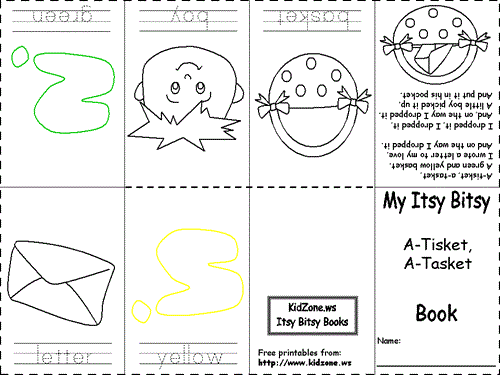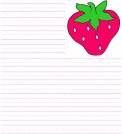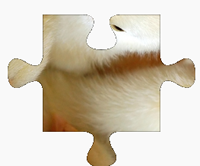DLTK's Nursery Rhymes for Kids
A Tisket, A Tasket
A-tisket, a-tasket,
A green and yellow basket.
I wrote a letter to my love,
And on the way I dropped it.
I dropped it, I dropped it,
And, on the way I dropped it.
A little boy picked it up,
And put it in his pocket.
A Tisket, A Tasket Lyrics and Coloring Pages
A Tisket, A Tasket Crafts
A Tisket, A Tasket Printable Resources:
A Tisket, A Tasket Puzzle Worksheets:
Other Crafts You Might Enjoy:
On-Line Jigsaw Puzzles:
The History of "A Tisket, A Tasket"
"A Tisket, A Tasket" is a traditional nursery rhyme and children's song that has been enjoyed for generations. It is known for its simple and repetitive lyrics, which make it easy for children to remember and sing along.
Origins and Early History
- Traditional Rhyme: "A Tisket, A Tasket" was first published in 1879 in the United States. The rhyme was part of the oral tradition of children's songs and games, commonly used in a circle game where children would sing the rhyme while dropping and picking up a handkerchief as part of a children's game similar to "Duck, Duck, Goose."
- Game and Play: Historically, the rhyme was associated with a children's game where players would sit in a circle, and one child would walk around the outside, dropping a handkerchief or basket behind someone as part of a game similar to "Drop the Handkerchief."
Cultural Impact and Adaptations
-
Ella Fitzgerald's Recording: The most famous adaptation of "A Tisket, A Tasket" is Ella Fitzgerald's jazz recording from 1938. Fitzgerald co-wrote an expanded version of the rhyme with Al Feldman (Van Alexander), turning it into a swing jazz hit that became one of her signature songs. The song's success helped launch Fitzgerald's career and has become a classic in American music history .
- Musical Influence: Fitzgerald's version of "A Tisket, A Tasket" is a significant contribution to the jazz genre, showcasing her vocal talents and the swing style that was popular in the late 1930s and 1940s. The song's playful lyrics and upbeat tempo made it a favorite on radio and in dance halls .
- Cultural Legacy: The nursery rhyme and Fitzgerald's adaptation have maintained their popularity over the years, appearing in various media, including films, television shows, and children's music collections. The song is often used to introduce young audiences to jazz music and its history.
Educational Use
- Language Development: The rhyme's repetitive structure and simple vocabulary make it an effective tool for teaching language skills to young children.
- Musical Education: Fitzgerald's version is used in music education to introduce students to jazz and its influence on American music.















